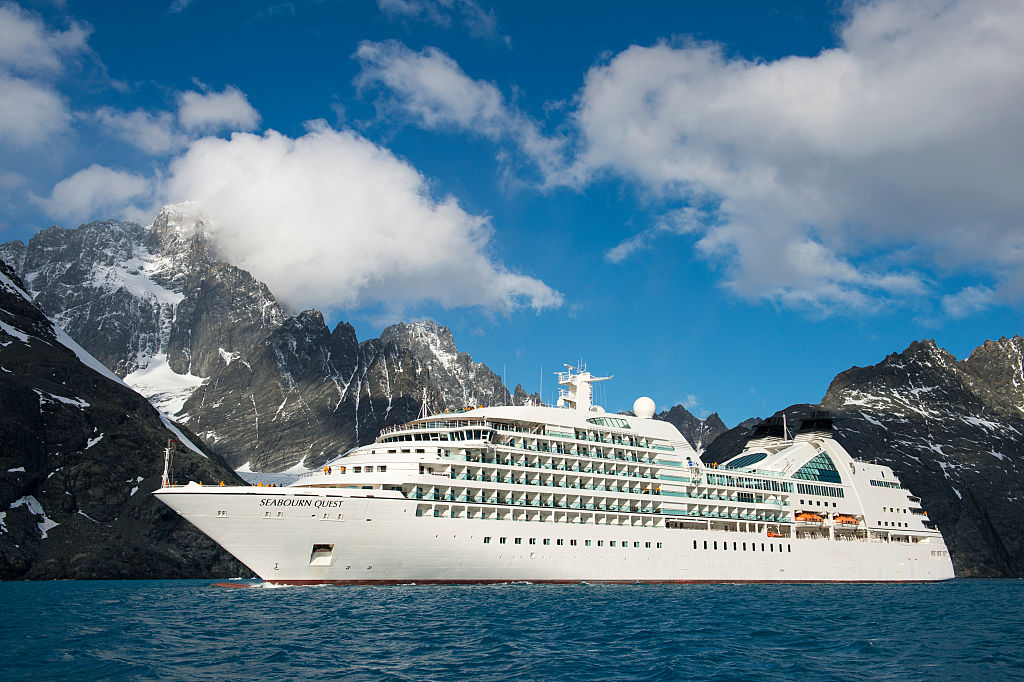Can Homeschoolers Save on Expenses With 529 Plans?
A new so-called 'home school tax break' could change how you save for your child's homeschool education. Find out how.


One of the primary concerns when raising children is their education. While many students attend public or private schools, some parents might choose to homeschool their children for an alternative learning experience.
According to the National Home Education Research Institute (HERI), homeschooling has increased 36% in recent years, with more than 3 million homeschool students currently enrolled in the U.S..
Despite homeschooling being on the rise, the IRS didn't used to consider this method of education a “school.”
From just $107.88 $24.99 for Kiplinger Personal Finance
Become a smarter, better informed investor. Subscribe from just $107.88 $24.99, plus get up to 4 Special Issues

Sign up for Kiplinger’s Free Newsletters
Profit and prosper with the best of expert advice on investing, taxes, retirement, personal finance and more - straight to your e-mail.
Profit and prosper with the best of expert advice - straight to your e-mail.
The nonschool status has barred homeschooling educators from claiming popular federal tax breaks, such as 529 plans, which offer tax-advantaged savings for education, for many years.
However, that recently changed with President Donald Trump's "One Big Beautiful Bill" (OBBB). A provision in the mega-tax legislation stipulates that 529 plans can be used for homeschool expenses.
There might be more ways you can save on expenses as a homeschooling educator. Here’s more of what to know.
529 plan for kids: College, public and private school
Current federal law allows tax-advantaged accounts such as Coverdell Education Savings Accounts (ESAs) or 529 Savings plans to help pay for K-12 and higher education (and 529s might even be used for retirement, thanks to the SECURE 2.0 Act).
The benefit of contributing to these accounts is that they allow you to make tax-free withdrawals for qualified expenses, which include any interest the account accrues.
What’s a “qualifying expense?” Some common examples that might be allowed for 529 plans include:
(Note: Coverdells generally cover a broader range of qualified expenses).
- Tuition (up to $10,000 annually for eligible K-12 institutions)
- Books, school fees, supplies and equipment required for enrollment
- Room and board (for students attending at least half time; off-campus rules differ)
- Computers, software and internet access
- Special-needs services and costs for registered apprenticeship programs
Note: The OBBB increased the annual withdrawal threshold to $20,000 for tax year 2026. Additionally, more types of qualified expenses are allowable for K-12 costs in 2025. For more information, check out Kiplinger's report, Money for Your Kids? Three Key Ways Trump's ‘Big Beautiful Bill’ Impacts Your Child's Finances.
Although Coverdells can be used for homeschool expenses, their income limits could exclude many families from using these tax-advantaged savings accounts.
On the other hand, 529 plans have no income limits and can be used for public, private or religious schools. But before the OBBB, federal law didn't allow 529 plan distributions to be used for homeschooled students (state laws may vary).
However, that has now changed under the OBBB.
New homeschooling tax breaks?
Historically, the IRS hadn't provided federal tax breaks for homeschooled education.
While some states, such as Illinois and Minnesota, offer state-level tax credits, there was very little federal tax relief for parents homeschooling their children in most of the U.S..
But a provision in the OBBB tax bill allows tax-exempt distributions from 529 savings plans for “additional educational expenses.” This includes eligible costs for elementary, secondary and homeschooled students.
Qualifying educational expenses for these students include:
- Curriculum materials
- Books and other instructional materials
- Tutoring or educational classes outside the home
- Testing fees and fees for dual enrollment in a higher education institution
- Online education materials
- Educational therapies for students with disabilities
This tax provision is big news for those with K-12 children, especially those who homeschool.
Homeschool can be expensive
The average cost of homeschooling an elementary school student is $1,295 per year, according to a survey conducted by the Home School Legal Defense Association (HSLDA). Middle and high school student costs are even higher, at about $1,636 per year.*
Apart from Coverdell savings accounts, there were few tax breaks to cushion homeschool expenses before the OBBB introduced tax-free withdrawals for homeschooled students.
Although parents of homeschoolers don't send their children to public school, they still pay for public schools through property taxes. This has been a source of contention in the homeschool community for years, particularly because:
- Students who live in rural areas (and might have tougher access to schools) make up 41% of homeschoolers.
- About 15% of parents choose to homeschool due to their child’s physical or mental health challenges, according to the American Institutes for Research, a nonpartisan research organization.
A federal tax break, such as that offered through a 529 plan, provides homeschooling families with tax relief, particularly if the family pays into the public school system and/or homeschools out of necessity.
*The survey conducted by the Home School Legal Defense Association (HSLDA) sampled 4,000 homeschooling families from all 50 states, Washington, D.C., and Puerto Rico. The families who responded had an average of two homeschooled students.
Back-to-school savings for homeschoolers
In addition to 529 plans, here are several ways homeschool parents might save on K-12 education costs for the upcoming school year:
- See if your state offers financial assistance, tax credits or other options to help cover homeschooling expenses. You can visit your state’s Department of Revenue or Department of Education websites for details.
- Enroll your child in city or town-led extracurricular activities if available. Programs sponsored by the local government might be more cost-effective than privately led alternatives.
- Sites such as Easy Peasy Homeschooling offer free curriculum options and printable materials for homeschool educators. These resources might be used in conjunction with lesson plan materials.
- Retailers such as Barnes & Noble and Target sometimes offer promotional codes for homeschooling parents and educators. To use these discounts, you’ll need to sign up for an account and verify your teacher status with a homeschool ID or similar method of verification.
Read More
- Claiming the Standard Deduction? Here Are Ten Tax Breaks For Middle-Class Families in 2025
- New 'Trump Account' for Child Savings
- Three Major Changes for Parents in 'Big Beautiful Bill'
- Family Tax Credits That Can Save You Money
Profit and prosper with the best of Kiplinger's advice on investing, taxes, retirement, personal finance and much more. Delivered daily. Enter your email in the box and click Sign Me Up.

Kate is a CPA with experience in audit and technology. As a Tax Writer at Kiplinger, Kate believes that tax and finance news should meet people where they are today, across cultural, educational, and disciplinary backgrounds.
-
 Don't Wait Until January: Your Year-End Health Checklist to Kickstart 2026
Don't Wait Until January: Your Year-End Health Checklist to Kickstart 2026Skip the fleeting resolutions and start the new year with a proactive plan to optimize your longevity, cognitive health, and social vitality.
-
 Premium Rewards Cards: More Perks, Higher Fees
Premium Rewards Cards: More Perks, Higher FeesSome issuers are hiking the annual fee on their flagship luxury credit cards by hundreds of dollars. Are they still worth using?
-
 3 Trips to Escape the Winter Doldrums, Including An Epic Cruise
3 Trips to Escape the Winter Doldrums, Including An Epic CruiseThree winter vacation ideas to suit different types of travelers.
-
 Retirees in These 7 States Could Pay Less Property Taxes Next Year
Retirees in These 7 States Could Pay Less Property Taxes Next YearState Taxes Retirement property tax bills could be up to 65% cheaper for some older adults in 2026. Do you qualify?
-
 Estate Tax Quiz: Can You Pass the Test on the 40% Federal Rate?
Estate Tax Quiz: Can You Pass the Test on the 40% Federal Rate?Quiz How well do you know the new 2026 IRS rules for wealth transfer and the specific tax brackets that affect your heirs? Let's find out!
-
 'The 'Mamdani Effect' in New York: Can the City Afford a Millionaire Tax?
'The 'Mamdani Effect' in New York: Can the City Afford a Millionaire Tax?State Tax Will higher income taxes drive the wealthy to flee New York in 2026?
-
 Law Reversal Looming? Trump Eyes 2026 Gambling Winnings Tax Change
Law Reversal Looming? Trump Eyes 2026 Gambling Winnings Tax ChangeTax Deductions It's no secret that the IRS is coming after your gambling winnings in 2026. But how long will that last?
-
 Trump's Plan to Eliminate Income Tax: 7 Things to Know Now
Trump's Plan to Eliminate Income Tax: 7 Things to Know NowTax Policy The potential consequences of eliminating taxes in favor of Trump tariffs could impact everything from inflation to Social Security and might give some U.S. taxpayers pause.
-
 5 Types of Gifts the IRS Won’t Tax: Even If They’re Big
5 Types of Gifts the IRS Won’t Tax: Even If They’re BigGift Tax Several categories of gifts don’t count toward annual gift tax limits. Here's what you need to know.
-
 The 'Scrooge' Strategy: How to Turn Your Old Junk Into a Tax Deduction
The 'Scrooge' Strategy: How to Turn Your Old Junk Into a Tax DeductionTax Deductions We break down the IRS rules for non-cash charitable contributions. Plus, here's a handy checklist before you donate to charity this year.
-
 IRS Says You Made a Tax Return Mistake? A New Law Could Help You Fight Back
IRS Says You Made a Tax Return Mistake? A New Law Could Help You Fight BackTax Law Updated taxpayer protections change what the IRS must explain on error notices and how long you have to respond.